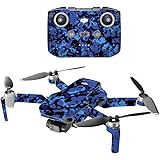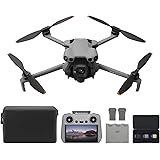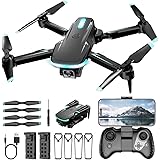Navigating the skies with a new drone can present a unique set of challenges, especially when aiming for precise control and high-quality aerial photography. The E88 camera drone, a popular choice for enthusiasts, offers an accessible entry point into this exciting world. While the accompanying video above provides a visual demonstration of the E88’s operation through its mechanical sounds, mastering its full potential requires a deeper understanding of its flight dynamics, controls, and integrated camera system.
This comprehensive guide delves beyond the basics, offering expert insights into optimizing your E88 camera drone flight experience. We’ll explore crucial pre-flight preparations, advanced control techniques, and essential camera settings to elevate your aerial imaging. Preparing for successful flights and capturing stunning visuals are within your grasp with the right technical knowledge and practical application.
Mastering E88 Camera Drone Flight: Pre-Flight Essentials
Effective drone operation begins long before takeoff. A meticulous pre-flight checklist is not merely a suggestion; it is a critical protocol for safety, performance, and successful aerial capture with your E88. Disregarding these steps often leads to unexpected flight anomalies or suboptimal imaging results.
First, ensure the E88’s battery and your remote controller’s batteries are fully charged. A low battery is a primary cause of unexpected landings or control issues. Visually inspect the propellers for any damage, cracks, or foreign debris that could imbalance the drone during flight. Verify that they are securely attached and oriented correctly, as misaligned blades significantly impact stability.
GPS calibration is another vital step for stable outdoor flights. The E88, like many modern quadcopters, relies on GPS for accurate positioning and features like One-Key Return. Execute the calibration procedure as outlined in your E88’s manual to ensure robust satellite lock. Without proper calibration, the drone may drift excessively, making precise flight challenging.
Finally, check the camera lens for cleanliness and any obstructions. A smudge on the lens or an unremoved protector film degrades image quality considerably. Confirm that your microSD card is inserted, formatted correctly, and has sufficient storage capacity for your planned recording. These initial preparations lay the groundwork for a safe and productive E88 camera drone flight.
Advanced E88 Drone Control: Beyond the Basics
Once pre-flight checks are complete, understanding the nuances of E88 drone control transforms a mere flight into an art form. The remote controller provides intuitive access to the drone’s movements, but mastering these requires practice and precision. Active voice commands from the pilot translate directly into the E88’s flight path, demanding focused execution.
Begin with controlled takeoffs and landings in an open, obstacle-free environment. Use gradual throttle inputs to achieve a smooth ascent. Practice maintaining a stable hover at a consistent altitude, a fundamental skill for steady aerial photography. The E88’s altitude hold feature assists significantly here, but manual fine-tuning refines stability for critical shots.
Explore different flight modes offered by your E88. Headless Mode, for instance, simplifies orientation by making the drone’s front correspond to the pilot’s forward direction, regardless of the drone’s actual heading. This can be particularly useful for beginners or when flying at greater distances. Conversely, disabling Headless Mode and relying on the drone’s true orientation enhances a pilot’s spatial awareness and overall control mastery.
Practice smooth translational movements—forward, backward, left, and right—without abrupt changes in speed or altitude. Incorporate gentle yaw rotations to smoothly pan the camera, essential for cinematic video. The key to advanced control is the ability to combine these movements fluidly, creating seamless flight paths that are visually appealing and functionally effective for capturing dynamic aerial footage.
Optimizing Aerial Photography with Your E88 Camera Drone
The E88 isn’t just a flying machine; it’s an aerial imaging platform. Unlocking its full photographic potential requires understanding its camera capabilities and applying best practices for aerial videography and still shots. The drone’s integrated camera, while often fixed, benefits immensely from optimized flight techniques.
For video, focus on slow, deliberate movements. Fast drone movements often result in shaky, unwatchable footage. Practice flying along straight lines or smooth arcs, maintaining a consistent speed. Utilize the E88’s altitude hold feature to keep the camera level, preventing undesirable vertical bobbing during recording. A steady flight path is paramount for cinematic quality.
When composing shots, consider the rule of thirds and leading lines within your frame. Position your drone to highlight compelling foreground elements or to capture expansive landscapes. The E88’s FPV (First Person View) capability, if present, is invaluable for real-time framing and composition. Pay attention to lighting conditions; early morning or late afternoon often provide softer, more dramatic light for photography compared to harsh midday sun.
While the E88 may have limited manual camera settings, understanding exposure compensation through flight path adjustments can still improve results. Flying slightly higher or lower, or changing the drone’s angle relative to the sun, can significantly impact how your subject is lit. Always review your footage and images post-flight to learn and refine your aerial photography techniques. Consistent practice with these principles will refine your E88 camera drone flight and imaging capabilities.
E88 Drone Maintenance and Safety Protocols
Maintaining your E88 camera drone and adhering to strict safety protocols are crucial for its longevity and for responsible operation. These aspects are often overlooked but are just as critical as flight skills. A well-maintained drone is a safer and more reliable drone.
After each flight, inspect your E88 for any signs of wear and tear. Check the propellers for nicks or bends; even minor damage can lead to vibrations and instability. Replace damaged propellers promptly using genuine E88 parts. Clean the drone’s body and camera lens to remove dust, dirt, or moisture. This prevents accumulation that could affect sensors or moving parts.
Proper battery care is essential for lithium polymer (LiPo) batteries. Avoid overcharging or fully discharging your E88’s battery. Store batteries at their recommended storage voltage (typically around 3.8V per cell) if not flying for extended periods. Cold weather significantly reduces battery performance, so pre-warm batteries before flight in cooler conditions.
Always fly your E88 in open areas, away from people, animals, and obstacles. Maintain visual line of sight (VLOS) with your drone at all times. Be aware of local drone regulations and airspace restrictions. Never fly near airports, restricted military zones, or over private property without explicit permission. Prioritizing safety and regular maintenance ensures a long and enjoyable experience flying your E88 camera drone.











